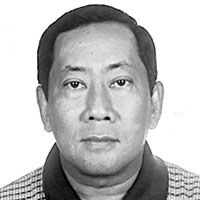All Saints’ Day a Filipino tradition and culture

Today is All Saints’ Day and tomorrow is All Souls’ Day and it is a holiday in the Philippines as it has been since time immemorial. These are the two days when Filipinos from all walks of life go home to their province or the place where their parents established their families and call it vacation time for most people. Where they go home and visit the graves of their loved ones in cemeteries is how they follow Catholic tradition, culture and history. These have made All Saints’ Day or Kalag-kalag as a day when families meet their siblings and become one family once more.
Call it timely that last week a researcher named Antonio Puyat III emailed me a letter to announce the 2018 Global Index Report by Skymorials revealed that the Philippines is the second highest ranked country in the world for remembering and cherishing loved ones. Filipino culture, which strongly values commitment to family, has seen the Philippines ranked second in the world, just behind Mexico, is a reality that we shall be seeing today and tomorrow during All Souls’ Day. If we are behind Mexico, it is because the Philippines was once under the archdiocese of Mexico and it is a fact that we take our Catholicism more from Mexico than Spain.
Skymorials scored countries in seven key criteria: including religious practices, cultural traditions, cultural anniversaries and the importance of family heritage and relationships. Skymorials lead researcher Antonio Puyat III said: “What sets the Philippines apart from the rest of the world is despite its varied groups and cultures, every cultural subset has an inherent deep love and respect for family at its core.”
We scored high on funerals and wakes, observing religious holidays, observing religious customs, keeping family records, and finding a permanent final resting place. Skymorials.com is the Philippines’ fastest growing online memorials and tributes website and is a proud partner of Arlington Memorial Chapels, Loyola Memorial Chapels, Heritage Park and Cosmopolitan Memorial Chapels.
It is a fact that many thoroughfares are littered with barangay chapels which mostly serve as wake service to the community. It is a fact these chapels are the principal reason why traffic is bad on those roads. Perhaps the Catholic Bishops Conference of the Philippines (CBCP) should consider banning such chapels along the road if the Catholic Church seeks to support the government’s efforts to improve our traffic problems. After all, we realize that basically we are the principal reason why we have problems in traffic, as we are part of the solution.
I have not been to Mexico, but many cemeteries in places in the United States where you can find a lot of Mexicans, you will see their cemeteries looking more like Mexican cemeteries. That’s why today Mexico and the Philippines jointly celebrate All Saints’ and All Souls’ Day.
Today as we observe All Saints’ Day, we should be thankful that we now have two Filipino saints… San Lorenzo Ruiz and San Pedro Calungsod. Japan, which is only one percent Catholic, has 26 saints. On Feb. 5, 1597, 26 Catholics – four Spaniards, one Mexican, one Indian (all of whom were Franciscan Missionaries, three Japanese Jesuits, and 17 Japanese members of Third Order of Missionaries including three young boys – were executed by crucifixion in Nishizaka Hill on the orders of Hideyoshi Toyotomi. These individuals were raised on crosses and then pierced through with spears. I saw the Shrine of these martyrs when I visited Nagasaki City three years ago.
Persecution continued sporadically, breaking out again in 1613 and 1630. On Sept. 10, 1632, 55 Catholics were martyred in Nagasaki in what became known as the Great Genna Martyrdom. At this time Catholicism was officially outlawed. The Church remained without clergy and theological teaching disintegrated until the arrival of Western missionaries in the 19th century.
Korea too has the Korean martyrs who were the victims of religious persecution against Catholic Christians in the 19th century in Korea. At least 8,000 adherents to the faith were killed during this period, 103 of whom were canonized en masse in May 1984. Paul Yun Ji-Chung and 123 companions were declared “Venerable” on Feb. 7 2014, and on Aug. 16, 2014, they were beatified by Pope Francis during the Asian Youth Day in Gwanghwamun Plaza, Seoul, South Korea. There are further moves to beatify Catholics who were killed by communists for their faith in the 20th century during the Korean War.
In my past columns, I mentioned already many saints mostly from Europe and in Asia Minor, so now I’m talking about Asian saints to prove to our readers that even if Japan and Korea are not fully Christian nations, they have more saints than a fully Catholic country like the Philippines.
* * *
Email: [email protected].
- Latest
- Trending



























